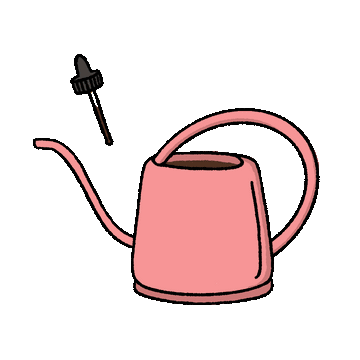Potting Mix is an easy one to forget about. It can be hard enough with all the different watering schedules, feeding, managing pests, considering placement...your new plant will come with potting mix included so at least that’s covered...right?
Sort of.
We know that most (but not all) plants need soil to survive. Soil supports, holds and protects the roots, as well as being where the plant draws its water and nutrients up from. But indoors, we definitely don’t want to be using soil to pot our plants up in. Taking soil from outside and using in pots for your indoor plants is not the best idea. Soil often comes with a host of bacteria, weeds and pests that might not get on so well with your indoor plant. Furthermore, soil is generally a lot more clay-ier (that’s a word right? “Clayier; to have more clay”) which not only makes the mix heavier, but can also thicken up after drying out, making it hard for water to permeate and for the roots to grow in.
So, in lieu of ‘soil’, we using potting mix. Potting mix is a lightweight, free-draining alternative to soil and is usually comprised of peat moss, compost, sand and maybe bark and perlite. Nowadays a lot of potting mixes will also contain slow release fertilisers and trace elements to help your newly potted plant establish itself. Occasionally, you might purchase a plant that has been grown up in something that doesn’t look like potting mix but more like thick strands of hair - this is most likely peat moss. Peat moss is great for its water retention and that’s why it’s often used for growing up cuttings or younger plants. As the plant matures though, with will need to be potted up into a potting mix as the peat most won’t be able to substitute for a good quality potting mix in the long run.
Which brings us to potting up. It’s important to change your plants potting mix every year or so. This can be done by re-potting (freshening the mix in and literally re-potting a plant in the same container) or potting up (placing a plant in a new container when it outgrows its current one). Re-potting helps add new nutrients to the soil, it loosens the roots a little to allow for better watering, it creates space for new root growth, as well as allowing you to check for any damaged/diseased roots that might need to be pruned off. Stay tuned as we’ll be doing a post on potting very soon.

Plant Runner Life Hack: Without things like worms and insects to do the loosening, indoor plants can suffer from compacted soil. Take a chopstick or even a moisture meter and aerate the soil occasionally by loosening and gently poking it into the mix.



1 comment
So interesting !
Leave a comment